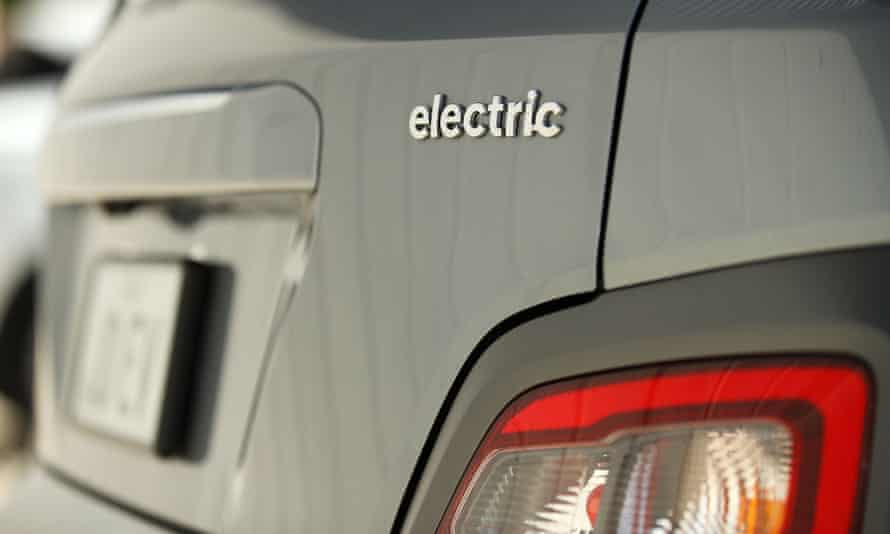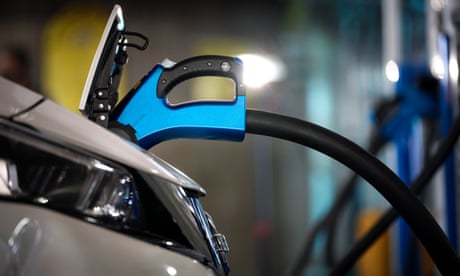Extract from The Guardian
Campaigners are dismayed that Australian governments are ‘shooting themselves in the foot’ over EV policies.

Confusing and contradictory state and federal policies on electric vehicles will slow take-up, campaigners say.
Last modified on Sun 30 May 2021 06.01 AEST
As of last week, Canberrans who buy electric and other zero-emissions vehicles automatically receive two years’ registration for free. The Australian Capital Territory already waives stamp duty for clean cars, and has promised households and not-for-profit organisations interest-free loans of up to $15,000 to buy them.
Also last week, the Victorian parliament passed the country’s first road user charge – a tax on every kilometre driven – for electric vehicles (EVs) and hybrids. The Labor state government’s legislation was backed by enough crossbench MPs to pass the upper house despite opposition from the Coalition and Greens. It starts on 1 July.
These contrasting approaches reflect what campaigners say is Australia’s confused and contradictory approach to helping the country embrace EVs at a time when other countries are increasingly backing them.
Just 0.75% of new cars bought in Australia last year were EVs. It compares with more than 4% globally, more than 10% in Britain and the European Union and nearly 75% in Norway.
The Morrison government – having accused Labor of wanting to “end the weekend” before the last federal election through a non-binding 50% EV target for 2030 – does not believe it is its role to rapidly change this.
The emissions reduction minister, Angus Taylor, has ruled out policies used elsewhere to drive EV uptake, such as direct subsidies to consumers or a ban on new fossil-fuel car sales from 2030 or 2035 as promised in countries including the UK, Germany, India, Thailand and Japan.
As with electricity generation, where the Morrison government dropped Coalition plans to introduce an overarching policy, the states and territories are moving to fill this federal void.
The ACT Greens-Labor government’s approach has been to attempt to accelerate uptake to help cut greenhouse gas emissions from transport as quickly as possibly. Treasurers in at least three states – Victoria, South Australia and New South Wales – have backed another path: introducing road user charges for EVs before they take off to build in a long-term revenue stream before the inevitable expansion of the technology.
Their stance follows a push by thinktank and lobby group Infrastructure Partnerships Australia and a Victorian government report to the Board of Treasurers – a forum of state and territory treasurers – last year that advised on how best to introduce road-user charges on clean and low-emissions cars.
The dispute is mostly not over whether a road user tax is ultimately a good idea. It is over whether now is the right time for one to be introduced, given the emphasis on rapid emissions cuts and growing warnings that Australia risks being left behind, and to have to pay more in future to transform its car fleet.
Both the Victorian Treasury report and separate independent expert analysis found a road user charge introduced without other support for EVs could discourage their uptake and slow emissions cuts.
Launching the ACT’s free registration program last week, Shane Rattenbury, the territory’s Greens leader and emissions reduction minister, said a road user tax on clean cars was a “disastrous policy” when national EV sales were at less than 1%. The territory government says it is prioritising reaching net zero emissions by 2045. “I would encourage those other states to rethink their strategies,” he said.
Under Victoria’s new laws, clean-vehicle owners must keep a record of odometer readings to provide to authorities at the end of the year. They will be charged 2.5 cents a kilometre for EVs and hydrogen fuel cell cars and 2 cents for hybrids. The rate will increase with the consumer price index.
The Andrews Labor government has estimated the average cost will initially be about $330 a year. It is expected to add at least $3,000 to the cost of a car over its lifetime.
The central argument for a road-user charge is that it will be needed to replace the national excise on fuel paid by petrol car drivers as a source of budget revenue. The Victorian government last year said it “proudly took an active role” in pushing treasurers across the country to introduce a road-user charge “that makes sure all motorists pay their fair share”.
Car manufacturers and environmental groups have not been persuaded. A group of 25 published an open letter in April urging the state government not to introduce what they described as the “worst electric vehicle policy in the world”, warning it increased the risk Victorians would not have access to high-quality, affordable EVs.
The Andrews government subsequently announced it would offer a $3,000 subsidy for EVs that cost less than $69,000, set a target of 50% of new car sales being zero or low emission vehicles by 2030 and promised to support more infrastructure.
Internal and external criticism has also delayed the introduction of road user taxes in NSW – where treasurer Dominic Perrottet’s proposal was opposed by the environment minister, Matt Kean, and transport minister, Andrew Constance – and SA, where the government announced a charge in the budget but later decided to wait a year to see how it worked elsewhere.
The passage of the road use tax through the Victorian parliament was welcomed by the chief executive of Infrastructure Partnerships Australia, Adrian Dwyer. Describing EVs as “established technology”, he applauded the state treasurer, Tim Pallas, and “the sensible crossbench” for staring down “a fringe fear campaign”.
“This is a ringing endorsement of the fact it is possible to encourage electrification of transport and still be able to pay for infrastructure,” Dwyer said. “It’s now time for the NSW government to follow the Victorian playbook and introduce a road user charge on EVs alongside a comprehensive proposal to turn the state’s light vehicle fleet green.”
Richie Merzian, the climate and energy director with the Australia Institute, said no serious case could be made that the road user charge was not a disincentive to cutting Australia’s rising transport emissions.
“It will further slow down an already embarrassing uptake of electric vehicles,” he said. “It is incredible that the same month that the US president pledges US$174bn for the EV industry you have the Australian government put nothing in its budget for EVs and a state government put a tax on them.
“It is so difficult to explain to overseas governments how successful Australians are at shooting themselves in the foot.”
Road to nowhere? EV commitments
Federal
Nearly $40m support for charging infrastructure
Holding a two-year EV trial for a government fleet.
ACT
No stamp duty on new zero emissions vehicles
Free vehicle registration for new zero emissions vehicles
Promising zero interest loans of up to $15,000 for households
All newly leased fleet cars zero emissions in 2020-21.
NSW
Low-emissions light vehicles receive a maximum $30 discount on registration
Proposed but delayed clean car road user charge
Government fleets to be 30% EVs by 2023
Fully electric bus fleet by 2030.
Victoria
Road user charge of 2.5 cents/km for zero emissions cars and 2 cents/km for plug-in hybrid cars starts on 1 July
$3,000 subsidies for EVs cheaper than $69,000
$100 registration discount for EV owners
EV owners pay a lower rate of motor vehicle duty than other luxury cars
50% target for new EV sales by 2030
$10m for 400 EVs in government fleet by 2023.
Queensland
EVs in the lowest band for registration and stamp duty
Doubling the number of EVs in government fleets every four years
Funded 31 fast-charging sites in 2017; another $2.5m for 13 stations in 2020.
South Australia
Promised a road user charge but has delayed it a year
Government fleet cars must be replaced by EVs where possible. Aim to be fully EVs by 2030
$13.4m for public charging network.
Tasmania
Target of 100% electric government fleet by 2030
$600,000 for fast charging network.
Western Australia
Minimum 25% EV target for government fleets by 2026
Up to $20m for creation of a charging network.
Northern Territory
EVs charged in the small car category for registration ($665.55 a year).
Source: Electric Vehicle Council
.png)


No comments:
Post a Comment